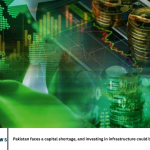India’s economy is a complex and dynamic system influenced by a wide range of factors, from global market fluctuations to domestic agricultural performance. Among the most critical elements impacting India’s economic health today are rising fuel prices and monsoon forecasts.
Fuel prices directly affect transportation, manufacturing, and inflation, while the monsoon season is pivotal for India’s agriculture, water resources, and rural livelihoods. Together, these factors exert a profound influence on economic growth, inflation rates, and social stability.
This article explores the multifaceted ways in which escalating fuel costs and uncertain monsoon predictions are shaping India’s economic landscape in 2025 and beyond.
Overview of India’s Economic Context
India, the world’s fifth-largest economy, is characterized by a mixed economy with agriculture, manufacturing, and services sectors contributing significantly to GDP. Agriculture, while accounting for about 15-18% of GDP, employs nearly half the population. The monsoon season, spanning June to September, is crucial for irrigation and crop yields, especially in rainfed regions.
Fuel prices, including petrol, diesel, and cooking gas (LPG), are vital cost components for businesses and consumers alike. India imports a substantial portion of its crude oil needs, making it vulnerable to global price shocks and currency fluctuations.
The Rising Fuel Prices – Causes and Effects
Causes of Rising Fuel Prices
Several factors contribute to rising fuel prices in India:
- Global Crude Oil Price Volatility: Geopolitical tensions, OPEC+ production decisions, and global demand-supply imbalances influence crude oil prices. Any disruption, such as conflicts in the Middle East or sanctions on oil-producing countries, leads to price hikes.
- Exchange Rate Fluctuations: Since oil is traded globally in US dollars, depreciation of the Indian Rupee against the dollar increases fuel import costs.
- Domestic Taxes and Levies: Central and state governments levy taxes on fuel, which contribute significantly to retail prices.
- Supply Chain Costs: Transportation and refining costs add to the final price paid by consumers.
Economic Effects of Rising Fuel Prices
- Inflationary Pressures: Fuel costs are a primary driver of inflation in India. Higher prices increase transportation and manufacturing expenses, leading to increased prices of goods and services across the economy.
- Impact on Transportation and Logistics: Rising diesel prices affect freight transport costs, which in turn raise prices of essential commodities, including food grains and fuel-intensive products.
- Reduced Consumer Spending: Higher fuel costs reduce disposable income, particularly impacting middle- and lower-income households, constraining demand for non-essential goods and services.
- Industrial Cost Pressures: Industries reliant on energy inputs, such as chemicals, plastics, and textiles, face increased production costs, which can hurt competitiveness and profitability.
- Fiscal Impact: Governments sometimes reduce subsidies or absorb part of fuel costs, affecting fiscal balances.
The Monsoon Forecast and Its Economic Importance
Significance of the Monsoon in India
The monsoon rains irrigate about 60% of India’s cropped area, especially vital for small and marginal farmers who depend on rain-fed agriculture. Good monsoon seasons ensure robust agricultural output, increase rural incomes, and boost demand for goods and services.
Challenges Posed by Erratic Monsoon
- Delayed or Deficient Rainfall: Insufficient or untimely rains can cause crop failures, reduced yields, and food inflation.
- Floods and Excess Rainfall: Conversely, excessive rainfall leads to floods, damaging infrastructure and agricultural land.
- Climate Change Effects: Changing monsoon patterns have increased unpredictability, causing difficulty in planning for farmers and policymakers.
Economic Impacts of Monsoon Variability
- Agricultural Output and Food Prices: A poor monsoon can lead to lower production of staple crops like rice, wheat, and pulses, driving up prices and food inflation.
- Rural Demand and Consumption: Since a majority of rural households depend on agriculture, monsoon performance directly influences rural consumption, which is a significant component of GDP.
- Banking and Credit Sector: Crop failures increase non-performing assets (NPAs) in rural lending, affecting financial sector stability.
- Employment: Monsoon affects employment in agriculture and allied sectors, influencing overall labor market dynamics.
Interlinkages Between Fuel Prices and Monsoon Forecasts
The interplay between fuel prices and monsoon forecasts creates a complex environment for India’s economy:
- Input Costs for Agriculture: Rising diesel prices increase the cost of running irrigation pumps and transporting agricultural produce.
- Supply Chain Vulnerabilities: Fluctuations in fuel prices combined with monsoon uncertainty can disrupt supply chains, affecting availability and prices of food and other essentials.
- Inflation Spiral Risks: Food inflation driven by monsoon shocks combined with fuel-driven transportation cost increases can exacerbate overall inflation.
Impact on Key Economic Sectors
Agriculture
Agriculture is directly influenced by monsoon variability and fuel prices. Fuel costs affect the price of fertilizers, seeds, irrigation, and harvesting machinery. Poor monsoon rains can cause lower yields, threatening rural incomes and food security.
Manufacturing
Rising fuel costs increase electricity generation and transportation expenses, impacting manufacturing competitiveness. Energy-intensive industries face cost pressures, which may result in increased prices or reduced output.
Services
Higher fuel prices raise transportation and logistics costs in the services sector. This impacts sectors like retail, tourism, and transportation services, potentially dampening consumer demand.
Inflation and Monetary Policy
The combined pressures from fuel price hikes and monsoon-driven food inflation can lead to higher consumer price inflation. The Reserve Bank of India (RBI) must balance inflation control with growth promotion, often facing challenging policy choices.
Government and Policy Responses
Subsidies and Price Controls
The government sometimes intervenes through subsidies on LPG or diesel to protect consumers. However, such measures can strain fiscal budgets.
Strategic Petroleum Reserves
India maintains strategic reserves to mitigate supply shocks but these have limits in addressing sustained global price hikes.
Agricultural Support Measures
Steps like minimum support prices (MSP), crop insurance schemes, and investment in irrigation infrastructure help buffer monsoon risks.
Renewable Energy and Fuel Alternatives
Promoting renewable energy and electric vehicles is part of the long-term strategy to reduce dependency on imported fuels.
Monetary and Fiscal Policy Coordination
Balancing inflation, growth, and fiscal health remains a key challenge for policymakers.
Future Outlook and Recommendations
Climate Adaptation and Resilience
Improving water management, investing in climate-resilient agriculture, and promoting crop diversification are critical for managing monsoon uncertainties.
Energy Security
Diversifying energy sources and enhancing domestic production can reduce vulnerability to global oil price shocks.
Strengthening Rural Economy
Enhancing rural infrastructure, credit access, and market linkages can stabilize rural incomes despite external shocks.
Inflation Management
Coordinated monetary and fiscal policies, alongside supply-side interventions, will be crucial to contain inflation without stifling growth.
Frequently Asked Questions
How do rising fuel prices impact India’s inflation?
Rising fuel prices increase transportation and production costs, which push up prices of goods and services, leading to higher overall inflation.
Why is the monsoon so important to India’s economy?
The monsoon irrigates a majority of India’s agricultural land, directly influencing crop yields, rural incomes, and food prices.
What happens if the monsoon is poor or delayed?
Poor or delayed monsoon results in lower agricultural output, food inflation, reduced rural consumption, and potential financial stress in rural banking.
How do fuel prices affect agriculture?
Fuel is essential for irrigation pumps, fertilizer production, and transportation. Rising fuel costs increase overall input costs for farmers.
What government measures exist to manage these economic pressures?
Subsidies, crop insurance, minimum support prices, strategic petroleum reserves, and investments in renewable energy are some government responses.
Can renewable energy reduce India’s vulnerability to fuel price shocks?
Yes, increasing renewable energy capacity and promoting electric vehicles can reduce dependence on imported oil and stabilize energy costs.
How does inflation affect the average consumer in India?
Inflation reduces purchasing power, making everyday goods and services more expensive, particularly impacting low- and middle-income households.
Conclusion
The twin challenges of rising fuel prices and uncertain monsoon forecasts represent significant pressures on India’s economic outlook. These factors affect inflation, agricultural productivity, consumer spending, and industrial growth, creating a delicate balancing act for policymakers. Addressing these challenges requires a combination of short-term mitigation and long-term structural reforms to ensure sustainable and inclusive economic growth.






